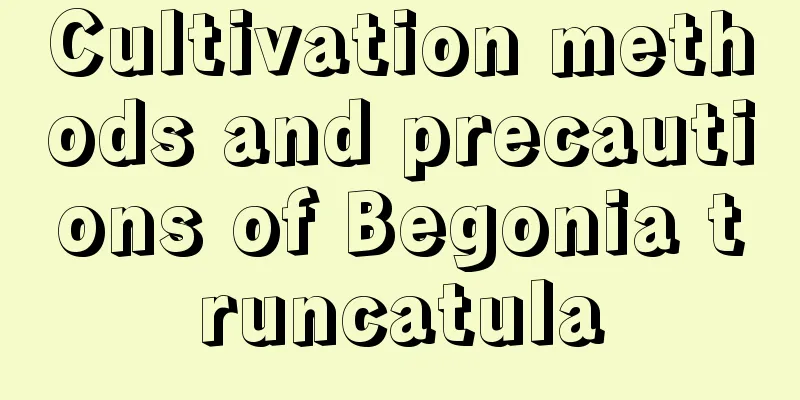Cultivation methods and precautions of Begonia truncatula

1. Maintenance methods1. Soil: Begonia sempervivum prefers soil with good drainage and rich in humus. When preparing the soil, you can mix leaf mold, coarse sand or perlite, and add some decomposed livestock manure. 2. Light: It does not have high requirements for light and can grow in a weak light environment. It should be avoided from direct sunlight, so it should be placed in a cool place in summer. 3. Temperature: It grows best at a temperature of 22-25°C. It is not resistant to high temperatures. If the temperature reaches 32°C, it needs to be cooled. During winter, the temperature should be kept above 10℃. 4. Water: It likes to grow in a humid environment, so the soil should be kept moist. The amount of watering should be appropriate, not too much, otherwise its roots will rot and die. You can spray more water at normal times to prevent dust from sticking to it. 2. Breeding techniques1. Reproduction: Most of the reproduction is done by division, which can be done in spring. Cut the rhizome with young sprouts and plant it in the soil. Do not water it too much. Place it in a cool and ventilated place, and it will take root in about two weeks. 2. Pruning: You can prune it in spring. You need to cut off the withered branches and leaves, and also trim the diseased branches and leaves at the same time. 3. Problem diagnosis and treatment1. Anthracnose: There will be brown spots on the rhizomes, and the roots will rot over time. Therefore, it is necessary to remove it promptly after discovery, and use thiophanate-methyl for prevention and treatment in time. 2. Yellowing leaves: If it is caused by insufficient light, you need to increase the light. If it is caused by the lack of fertilizer, it needs to be fertilized regularly. IV. Other issues1. How long is the flowering period: Its flowering period lasts for 2 months, and the flowering time is probably between April and June. 2. Can it be grown at home: Begonia can be grown at home. The leaves are colorful and the flowers are also very ornamental, so it would be great if it can be grown at home. |
<<: Jabuticaba cultivation methods and precautions
>>: Potato cultivation methods and precautions
Recommend
What flowers bloom in spring
1. Winter Jasmine It blooms relatively early in s...
Drink more of these 10 detoxifying scented teas to keep you beautiful and healthy
1. Dried chrysanthemum tea Put a few dried chrysa...
Taboos on placing lilies
1. Living Room This is a plant with a particularl...
The efficacy and function of Robinia
1. Cough relief Robinia has a good cough-relievin...
Cattail cultivation methods and precautions
1. Maintenance methods 1. Sunlight: Cattail grass...
What are the cultivation methods and precautions of coleus
Coleus Introduction Coleus is a plant of the Lami...
How long is the growth cycle of Scutellaria baicalensis?
Introduction to the growth of Scutellaria baicale...
How to grow blue apple succulent
Blue Apple Succulent Growing Conditions The suita...
How to grow Anthurium so that it blooms more vigorously?
Anthurium is a popular plant in the flower market...
How to grow red camellia at home
Red Camellia Growing Conditions The suitable grow...
The flower language and legend of honeysuckle
Flower language of honeysuckle As the guardian fl...
How to grow the Fire Festival
Explosion method illumination The cultivation of ...
When to plant garlic?
Garlic , as a common kitchen condiment , is widel...
The efficacy and function of Astragalus
1. Regulate blood pressure Taking Astragalus in m...
How to fertilize indoor flowers in winter
Do not fertilize dormant flowers When growing flo...









